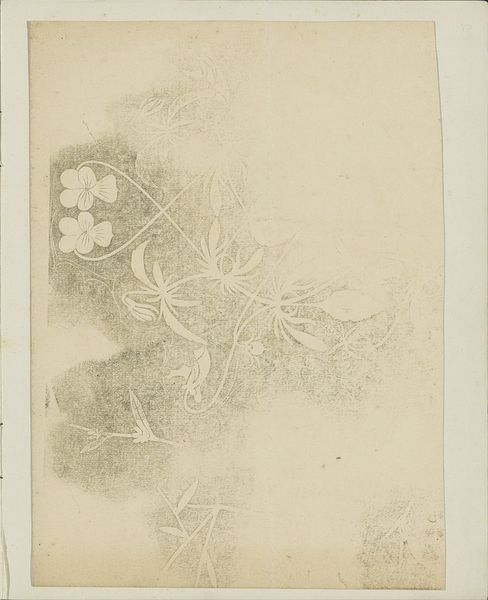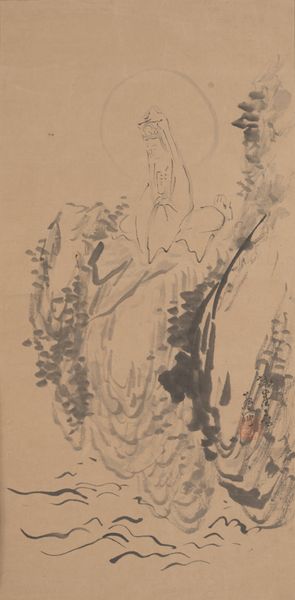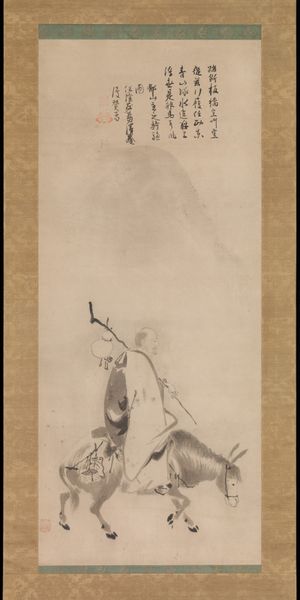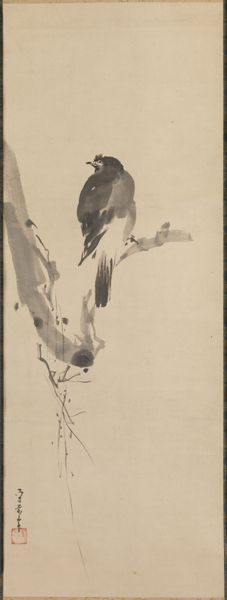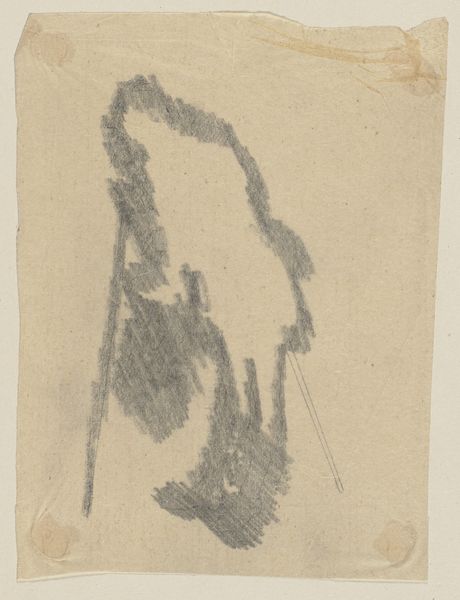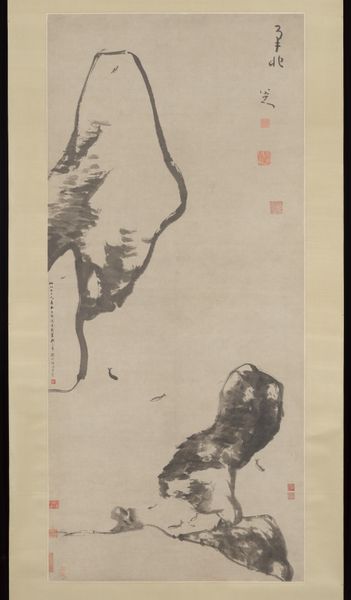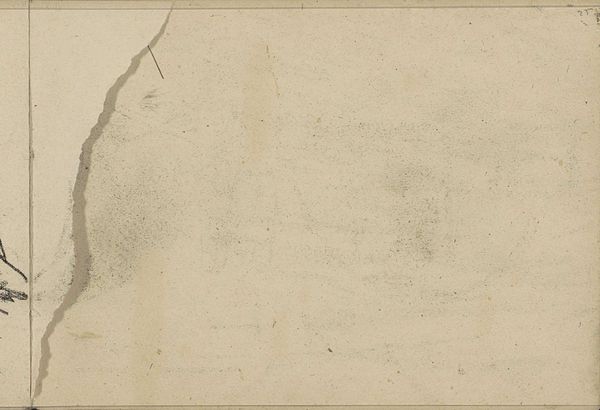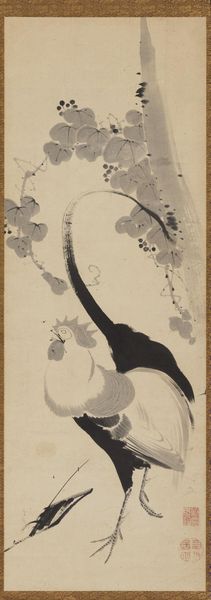![Heron on a Rock [right of a triptych of Scholar with Heron and Myna] by Kusumi Morikage](/_next/image?url=https%3A%2F%2Fd2w8kbdekdi1gv.cloudfront.net%2FeyJidWNrZXQiOiAiYXJ0ZXJhLWltYWdlcy1idWNrZXQiLCAia2V5IjogImFydHdvcmtzLzljMzFkZTZhLTc3ZWYtNGE4Ny05YWIyLTBlODAzM2RmOGJiYi85YzMxZGU2YS03N2VmLTRhODctOWFiMi0wZTgwMzNkZjhiYmJfZnVsbC5qcGciLCAiZWRpdHMiOiB7InJlc2l6ZSI6IHsid2lkdGgiOiAxOTIwLCAiaGVpZ2h0IjogMTkyMCwgImZpdCI6ICJpbnNpZGUifX19&w=3840&q=75)
Heron on a Rock [right of a triptych of Scholar with Heron and Myna] c. mid 17th century
0:00
0:00
drawing, paper, ink-on-paper, ink
#
drawing
#
ink painting
#
asian-art
#
landscape
#
ukiyo-e
#
paper
#
ink-on-paper
#
ink
#
pencil drawing
Dimensions: 66 x 11 1/2 in. (167.64 x 29.21 cm) (mounting)31 1/4 x 11 1/2 in. (79.38 x 29.21 cm) (image)
Copyright: Public Domain
Kusumi Morikage painted this image of a heron on silk during the Edo period in Japan, around the late 17th century. Morikage belonged to the Kano school, which was the dominant style of painting favored by the shogunate and other powerful institutions. However, Morikage was expelled from the school, and this painting might reflect his attempt to find an alternative mode of artistic expression, with closer ties to popular culture. The heron is depicted in a rather informal and intimate way, lacking the idealization of the Kano style. Some scholars point out that this new mode of representation aligned with the values of the increasingly influential merchant class, who favored more direct and naturalistic depictions of the world around them. To understand this painting better, we can look at the social and economic transformations of the Edo period, paying attention to the shifts in patronage and the emergence of new artistic markets. This will help us appreciate the complex interplay between artistic expression and social change.
Comments
minneapolisinstituteofart about 2 years ago
⋮
Japanese hanging scrolls often come in groups of three: a central figure painting flanked by birds, landscapes, or complementary figures. Kusumi Morikage made this triptych’s central figure a Chinese scholar whose servant boy holds a pole to display a hanging scroll painting of bamboo. Though unidentified, the scholar is likely Su Dongpo (1037–1101), a famous Chinese statesman, poet, and painter. Bird-and-flower paintings in an abbreviated, quasi-Chinese style complement this portrait of an ancient Chinese literary hero.
Join the conversation
Join millions of artists and users on Artera today and experience the ultimate creative platform.


